#raphus cucullatus
Explore tagged Tumblr posts
Text
#dodo#raphus cucullatus#rodrigues solitaire#pezophaps solitaria#raphinae#columbidae#columbiformes#pigeon#bird#dinosaur#modern dinosaurs#extinction
391 notes
·
View notes
Text
https://inhumanspecies.etsy.com
#paleoart#science#dodo#dodo bird#raphus cucullatus#inhuman species#bird#skull#skeleton#crâne#squelette#museum
2 notes
·
View notes
Text

Gone, but not forgotten. 🦤 Today’s Exhibit of the Day is one of the most famous birds in history: the Dodo (Raphus cucullatus). This iconic species is a lesson in extinction. Around the year 1600, Dutch soldiers found the Dodo on Mauritius Island, east of Madagascar. Less than 80 years later, it was gone. Deforestation, hunting, and the introduction of invasive species contributed to the downfall of this flightless bird.
Though it died out before photography, the Dodo’s skeleton offers clues about what this species was like. For example, this bird couldn’t fly—its wings were small for its size, its sternum had no keel (the support birds need for flight muscles), and it had thick leg bones made for walking. You can see a Dodo skeleton in the Museum’s Hall of Biodiversity.
Photo: D. Finnin/ © AMNH
#science#amnh#museum#nature#natural history#fossil#animals#fact of the day#did you know#dodo bird#dodo#extinction#american museum of natural history#natural history museum#museum of natural history
1K notes
·
View notes
Text

[2968/11080] Dodo - Raphus cucullatus
(extinct)
Order: Columbiformes (pigeons and doves) Family: Columbidae
Photo credit: Julian P. Hume
94 notes
·
View notes
Text
Dodo Bird :-

The dodo (Raphus cucullatus) was a flightless bird native to Mauritius, an island in the Indian Ocean. It stood about three feet tall and weighed around 15–40 pounds. The dodo evolved without natural predators, making it fearless of humans. Unfortunately, when sailors arrived in the late 1500s, they hunted the bird extensively, and introduced animals like rats and monkeys ate its eggs. By the late 1600s, the dodo was extinct. It has since become a symbol of human-caused extinction. Despite its disappearance, the dodo remains famous in popular culture, representing lost species and the importance of conservation efforts.
#science#fact of the day#did you know#fossils#dodo bird#dodo#facts#fact of life#interesting facts#did you guys know that#biology#cool animals#nature animals#animals#birds#wild animals#animal of the day#forest#naturelove world#nature lovers#nature#nature life#my post#history#histoire#photography
21 notes
·
View notes
Text
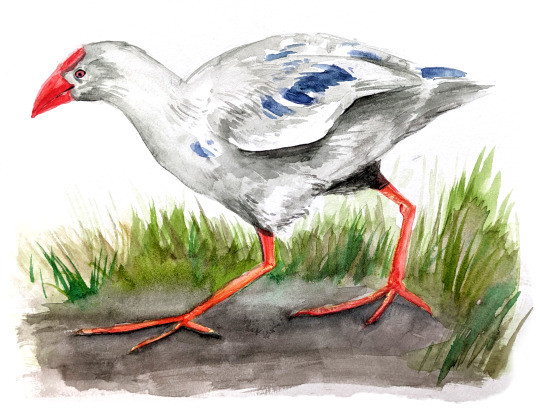
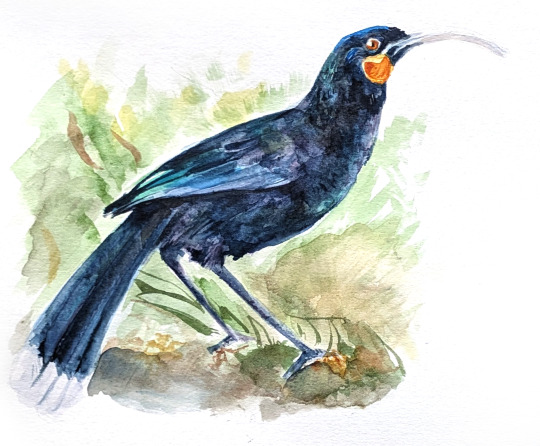

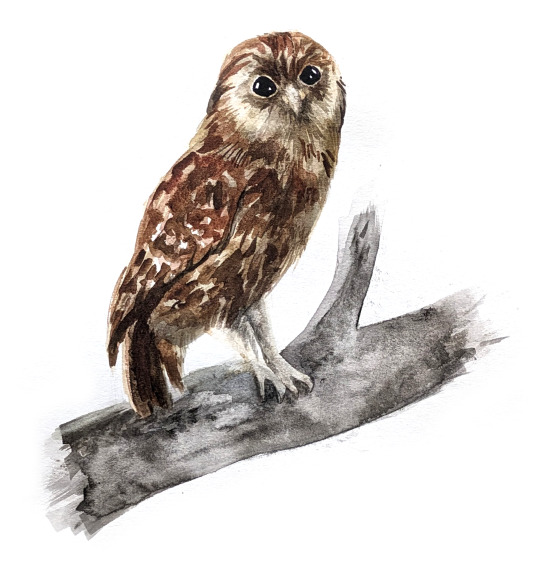
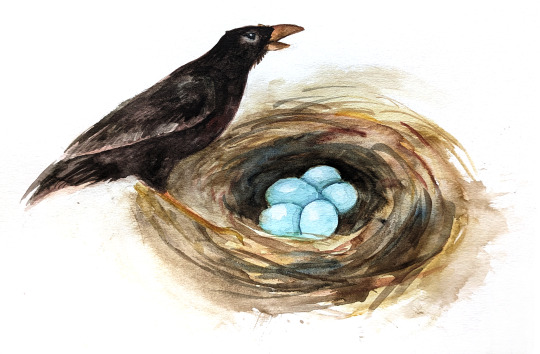
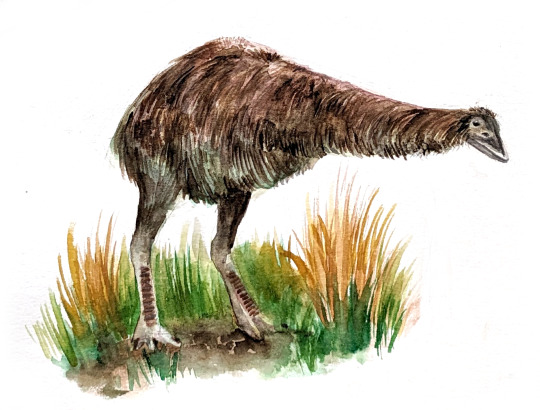
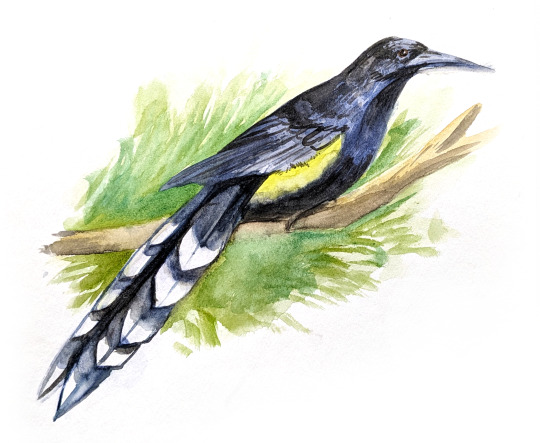
Oh, extinct birds, how I love you and miss you.
In order:
White swamphen (Porphyrio albus), native to Lord Howe Island
Huia (Heteralocha acutirostris), native to Aotearoa New Zealand
Dodo (Raphus cucullatus), native to Mauritius
Laughing owl (Ninox albifacies), native to Aotearoa New Zealand
Mysterious starling (Aplonis mavornata), native to Mauke
North Island giant moa (Dinornis novaezealandiae), native to Aotearoa New Zealand
O'ahu 'ō'ō (Moho apicalis), native to O'ahu
[Image IDs in alt text.]
#extinction#extinct animals#extinct birds#watercolor#scientific illustration#white swamphen#huia#dodo#laughing owl#mysterious starling#giant moa#'o'o#artaneae
190 notes
·
View notes
Text
Animal of the Day!
Dodo (Raphus cucullatus)
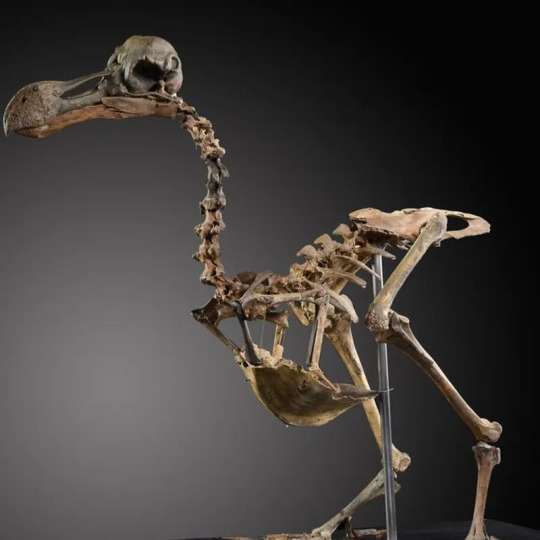
(Photo from Smithsonian Magazine)
Extinction Date- 1681
Habitat- Island of Mauritius
Size (Weight/Length)- 22 kg; 90 cm tall
Diet- Fruits; Nuts; Roots; Seeds
Cool Facts- As dodos went extinct in the 1600’s, we only know what they look like from incomplete skeletons and illustrations. These large birds were found only on the tiny Island of Mauritius off the coast of Madagascar. Little is known about their behavior but their skeletons imply they could run extremely fast despite being unable to fly. Their large beak may have been used in territorial displays due to the Island’s limited resources. They were primarily vegetarians but would occasionally eat a crab or shellfish. People first visited the Island of Mauritius in 1507 and the dodos were quickly hunted by people and invasive species alike due to their flightless and fearless behavior. Today, the near threatened Nicobar pigeon is their closest relative. Cracking down on the illegal pet trade and their illegal poaching has resulted in the Nicobar pigeon doing much better than their long since passed relative.
Rating- 13/10 (Dodos were originally thought to be a myth and extinction to be propaganda.)
#animal of the day#animals#birds#friday#october 6#dodo#dodo bird#biology#science#conservation#the more you know#extinct#skeleton#fossil#but not really#subfossil#extinctober#nicobar pigeon
204 notes
·
View notes
Text

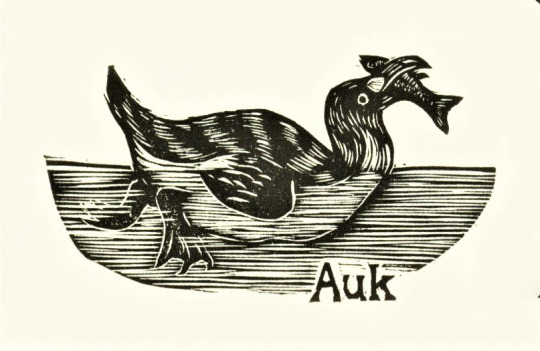
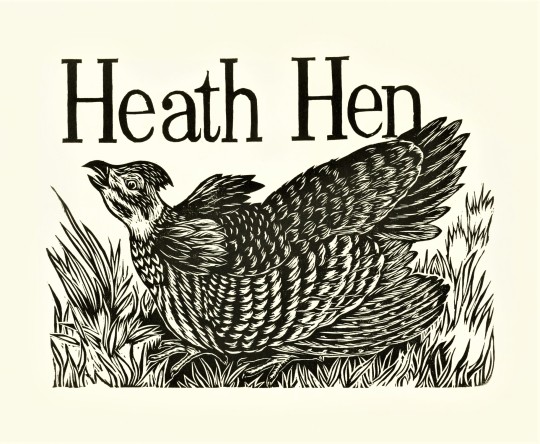

A Gone World Feathursday
Yesterday, we featured some woodcuts by the New Jersey-based artist Michael Dal Cerro (b. 1953) from his recently-donated 1992 artists book Small World Alphabet published in Seattle by Grey Spider Press in a limited edition of 75 copies. The book is an abecedarium highlighting the outsized impact our species has had on our planet's environment. Today we show all the woodcut birds presented in his book, and of course the unifying factor between these specific species is that they have all gone extinct through human intervention:
Dodo (Raphus cucullatus): a large flightless bird that was endemic to the island of Mauritius, part of a clade of extinct flightless birds that were members of the family which includes pigeons and doves. This docile bird that had never known predators was hunted to extinction by the late 17th century.
Great Auk (Pinguinus impennis): a large sea-going flightless bird of the family Alcidae that became extinct by the mid-19th century due to overhunting, particularly for its valuable down feathers used in pillows.
Heath Hen (Tympanuchus cupido cupido): an extinct subspecies of the Greater Prairie Chicken (Tympanuchus cupido), a large North American bird in the grouse family. Once extremely common, it became extinct in 1932, due to centuries of overhunting, predation by feral cats, and poaching.
Passenger Pigeon (Ectopistes migratorius): a migratory species of North American pigeon, once the most abundant bird on the continent, that was hunted to extinction by 1914.
View other posts on extinct birds.
View more Feathursday posts.
#Feathursday#extinct birds#Michael Dal Cerro#Small World Alphabet#Grey Spider Press#woodcuts#Dodo#Great Auk#Heath Hen#Passenger Pigeon#woodcut artists#abecedarium#abecederia#fine press books#fine press printing#birds#birbs!
147 notes
·
View notes
Text

Friendly reminder this Christmas that prehistoric animals brought back from extinction through as of yet unknown means do not make good pets!

This handsome fella is Doug the Dodo Bird (Raphus cucullatus). When Doug was just a chick, he was smuggled off of the island of Mauritius by wildlife traffickers and was sold to a black market exotic pet dealer. Doug’s new owners proceeded to keep him in a tiny cage and feet him an inadequate diet of bird seed, and as a result his growth was severely stunted. Luckily, Doug was rescued by the Rehistoric Foundation and now acts as our mascot/ambassador animal. Thanks to the round the clock specialty care he receives from our staff and volunteers, Doug has made an amazing comeback, though he can never be released back into the wild. Sadly, hundreds of other previously extinct animals are sold as pets every year and kept by people who don’t know how to properly care for them. This has resulted in a massive increase of attacks of Lazarus Taxa on humans as well as cases of people releasing their pets into the wild once they become too big or too dangerous to take care of. So, for this holiday season do the right thing and don’t get your kids a previously extinct animal for Christmas!

Merry Christmas and happy holidays from everyone here at the Rehistoric Foundation!!!
#prehistoric#prehistoric animals#dodo#dodo bird#extinct animals#extinction#extinct species#animals#rehistoric foundation#lazarus taxa#lazarus phenomenon#sculpture
5 notes
·
View notes
Text
The Fascinating World of Extinct Animals: Stories of Lost Species and Conservation Lessons 🌍✨

The DODOD Introduction The story of extinct animals is both a testament to the fragility of life and a reflection of the ever-changing nature of our planet. 🌎💔 Extinct animals, those species that no longer exist, capture our imagination and serve as poignant reminders of the impact humans and natural events have on biodiversity. 🐾📜 In this article, we delve into the causes of extinction, profile some notable extinct animals, and highlight the importance of conservation efforts to prevent further losses. 🛡️🌿 Notable Extinct Animals 1. The Dodo (Raphus cucullatus) Habitat: Mauritius, Indian Ocean 🏝️ Extinction Date: Late 17th century 📜 Causes: The dodo was driven to extinction by a combination of hunting by sailors and predation by introduced species such as rats, pigs, and monkeys. Habitat destruction also played a role. 🚢🐀🐖 2. The Passenger Pigeon (Ectopistes migratorius) Habitat: North America 🌎 Extinction Date: Early 20th century (1914) 📜 Causes: Once numbering in the billions, passenger pigeons were hunted extensively for food and sport. Deforestation also destroyed their natural habitat. 🏞️🍂 3. The Tasmanian Tiger (Thylacine) Habitat: Tasmania, Australia, New Guinea 🌏 Extinction Date: 20th century (1936) 📜 Causes: Hunting, habitat destruction, and competition with dogs contributed to the decline of the Tasmanian tiger. Government bounties also encouraged widespread killing. 🐕🏞️ 4. The Great Auk (Pinguinus impennis) Habitat: North Atlantic coasts 🌊 Extinction Date: Mid-19th century (1844) 📜 Causes: The great auk was hunted for its feathers, meat, and oil. Overharvesting of eggs and human disturbance of breeding sites also led to its extinction. 🌊🐦
5. The Woolly Mammoth (Mammuthus primigenius) Habitat: Northern Hemisphere (Europe, Asia, North America) 🌍❄️ Extinction Date: Approximately 4,000 years ago 📜 Causes: Climate change at the end of the last ice age reduced their habitat. Additionally, overhunting by early humans played a significant role in their extinction. 🌡️🏹 Causes of Extinction 1. Natural Causes Climate Change: Historical climate shifts, such as the ice ages, have drastically altered habitats, leading to the extinction of many species unable to adapt. ❄️🌡️ Natural Disasters: Volcanic eruptions, asteroid impacts, and tsunamis can create immediate and long-term changes to environments, wiping out species. 🌋☄️🌊 Predation and Competition: Evolutionary pressures, including predation and competition for resources, have naturally led to the extinction of less adaptable species. 🐅🍃 2. Human-Induced Causes Habitat Destruction: Deforestation, urbanization, and agriculture reduce the natural habitats of many species, leading to their decline. 🏞️🪓🏘️ Overexploitation: Hunting, fishing, and poaching have driven many species to extinction by depleting their populations faster than they can reproduce. 🎣🏹💔 Pollution: Industrial waste, pesticides, and plastics contaminate ecosystems, causing health problems and deaths in wildlife. 🏭🧴🐢 Climate Change: Human activities such as burning fossil fuels contribute to global warming, affecting the natural habitats and lifecycles of many species. 🌍🔥🏭 Introduction of Invasive Species: Non-native species introduced by humans can outcompete, prey on, or bring diseases to native species, leading to extinction. 🐍🌱🌏 The Importance of Conservation The extinction of species has a profound impact on ecosystems and the services they provide. 🐾🌿 Biodiversity is crucial for maintaining ecological balance, pollination of plants, purification of water, and many other functions essential for life on Earth. 🌍💧 Conservation efforts are vital to protect the remaining species and prevent further extinctions. Here are some key strategies: Protected Areas: Establishing national parks and wildlife reserves to safeguard habitats. 🏞️🛡️ Legislation: Enforcing laws against poaching, illegal logging, and trade in endangered species. 📜🚫 Captive Breeding Programs: Breeding endangered species in captivity to reintroduce them into the wild. 🦏🐣 Habitat Restoration: Rehabilitating degraded ecosystems to support wildlife. 🌱🏞️ Climate Action: Mitigating climate change by reducing greenhouse gas emissions. 🌍🔥 Public Awareness: Educating people about the importance of biodiversity and conservation efforts. 🧑🏫🌿
Conclusion The history of extinct animals is a sobering reminder of the delicate balance of life on Earth. 🌍💔 While the loss of species like the dodo and the Tasmanian tiger can never be undone, we can learn from these events to better protect the remaining biodiversity. 🐾🌿 Through concerted conservation efforts, we can strive to preserve the natural world for future generations, ensuring that more species do not meet the same fate as those that have already been lost. 🌍💚 Join the Conversation! 🌟 If you found this article informative, please like, comment, and share it with fellow wildlife enthusiasts. Together, we can make a difference in protecting our planet's incredible wildlife. 🌟

The Mammoth
#animal#planet#wildlife#plants#animals#nature#forest#nature photography#naturelovers#photos#extinct animals#biodiversity#conservation#wildlifeprotection#saveourplanet#ecofriendly#nature lovers#greenliving#preservenature
14 notes
·
View notes
Text


[ID: a painting of the Dodo, with a large brown body and beak, and a black head, standing in grass. a photo of the Amethyst brown dove, darkly coloured with purple on it's neck and around it's eyes]
21 notes
·
View notes
Text

The Death of One Raphus cucullatus
#digital art#art#artists on tumblr#artwork#original art#digital aritst#digital painting#painting#digital artist#digital arwork#digital drawing#digital illustration#dodo bird#bird art#extinct species#extinct animals#extinct birds
10 notes
·
View notes
Photo

Come la storia ha trattato male il dodo
Storia e arte di Mikel Angelo Francisco
Quando si tratta di specie che sono state denigrate e maltrattate dalla storia, poche, se non nessuna, possono essere paragonate al dodo (Raphus cucullatus). L'ultimo avvistamento confermato di questo uccello risale al 1662—meno di 100 anni dopo che i marinai olandesi invasori avevano notato per la prima volta la sua esistenza sull'isola africana di Mauritius. Col tempo, l'uccello incapace di volare è diventato il simbolo sfortunato del fallimento evolutivo. La sua reputazione di essere terribilmente inadatto alla sopravvivenza ha cementato il suo posto nella cultura popolare e nel lessico del mondo anglofono come simbolo di obsolescenza ("morto come un dodo") e pura stupidità ("stupido come un dodo").
Per secoli, la narrazione dominante sul dodo era che fosse comicamente goffo, grasso, e inadatto a sopravvivere in un mondo dominato dagli umani. Supponendo che fosse così, la sua incapacità di volare lo rendeva una preda facile per i coloni europei, che lo portarono rapidamente all'estinzione.
Ma recenti studi suggeriscono che fosse agile e capace, muovendosi abilmente tra alberi e rocce con forti gambe. Aveva un buon senso dell'olfatto e potrebbe essere stato intelligente quanto un piccione. La stupidità non ha condannato il dodo; gli umani sì. Fu la caccia, insieme all'introduzione di specie invasive come i ratti, i gatti e i maiali che rovinò il suo habitat e distrusse il suo cibo.
Questo solleva la domanda: come abbiamo fatto a sbagliare così tanto sul povero dodo?
Dopotutto, questa specie non è come i dinosauri non aviari, scomparsi milioni di anni fa, di cui non abbiamo mai visto uno dal vivo nel contesto geologico. Di fatto, il dodo è uno degli esempi più celebri di una specie la cui scomparsa si è svolta sotto i nostri occhi. Sicuramente, qualcuno con un pennino e un pezzo di carta avrebbe potuto registrare come apparisse e si comportasse un dodo vivo, giusto?
La risposta, ovviamente, è no. Sfortunatamente, l'accuratezza delle loro rappresentazioni lasciava molto a desiderare, per usare un eufemismo.
Curiosamente, Carl Linnaeus stesso propose un nome binomiale per il dodo: Didus ineptus ("dodo stupido"), che risultava terribilmente adatto.
Inoltre, vale la pena notare che quando il dodo scomparve, non avevamo ancora standardizzato come categorizzare gli esseri viventi. Ciò significava anche che nessuno aveva lavorato con un esemplare tipico —un "punto di riferimento" accettato per descrivere i tratti fisici del dodo.
In aggiunta, il dodo morì durante un periodo anomalo nella storia scientifica: non solo la tassonomia moderna non esisteva ancora, ma anche la nostra comprensione dell'estinzione—di come l'intera popolazione di una specie potesse cessare di esistere—era ancora un concetto nuovo.
A un certo punto, le persone dubitarono persino dell'esistenza reale del dodo, e questo divenne associato a creature mitologiche come il grifone e la fenice dell'antichità mitologica.
Con tutte queste considerazioni, un team di ricercatori britannici ha affrontato il compito (anche se inevitabile) di districare i nodi della nomenclatura del dodo. Questo processo ha comportato l'esame di circa 400 anni di letteratura, nonché di documenti sul dodo. Pubblicarono il loro studio nello Zoological Journal of the Linnean Society.
Nel loro articolo, confermarono che il dodo e il suo più stretto parente estinto, il solitario di Rodrigues (Pezophaps solitaria), appartenevano alla stessa famiglia dei piccioni e delle colombe (Columbidae).
Non è solo una questione di pedanteria scientifica: studiare la storia del dodo può chiarire il suo ruolo nell'ecosistema di Mauritius, il che fornisce informazioni utili per la conservazione degli habitat e delle specie.
Questo può salvare altre specie dall'estinguersi come il... tu sai. (Ancora deluso.)
(via Il Dodo non era così stupido come pensavamo)
2 notes
·
View notes
Text
I support this product idea on LEGO Ideas, and you should, too!
3 notes
·
View notes
Note
ooouughgh i love you shelly you silly gal. can you tell us about dodo birds
[<3]
Ah yes, the Raphus cucullatus!
Did you know that dodo birds were bigger than a turkey, weighing about 23kg? Ooh! By the way, dodo birds had an advance in genetics for de-extinction, but scientists were still debating on the ethical nature of, well, dodo revival.
2 notes
·
View notes
Text
Los gatos domésticos han extinguido más animales que ningún otro depredador
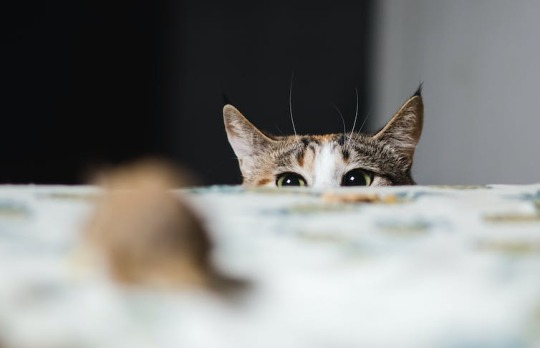
Sergey Zaykov/Shutterstock
Manuel Peinado Lorca, Universidad de Alcalá
Algunas especies exóticas como el cangrejo americano, el lucio, los sapos de caña, las ranas toro o los mapaches suelen copar las estadísticas y los informes sobre la implicación de los animales invasores en la extinción de especies. Sin embargo, pocos de ellos han causado estragos en la biodiversidad equiparables a los de una de las mascotas domésticas más encantadoras: los gatos.
Tan solo en los hogares españoles existen unos cuatro millones de gatos, 120 000 de los cuales acaban abandonados en las calles cada año.
Depredador, solitario y cazador implacable. Ágil, rápido, voraz y de fuerte instinto territorial. El gato es un cruel carnívoro, un animal a la vez cautivador e indómito que constituye una muestra de la perfección evolutiva. Estas características hacen de él una especie extremadamente reacia a la domesticación y propensa a la desobediente libertad.
Han extinguido a más vertebrados que ningún otro depredador
Los gatos han extinguido a más vertebrados que ningún otro depredador debido a su cosmopolitismo, a su eficacia como carnívoros, a una enorme capacidad de adaptación que les ha permitido colonizar desde las islas subantárticas a las muy áridas y cálidas cercanas a los trópicos. Pero también a una gran fecundidad que los convierte en una bomba demográfica muy difícil de parar.
La extinción más rápida de una especie la provocó un gato. Se llamaba Tibbles y era la mascota del farero de la isla Stephens, un pequeño saliente rocoso entre las dos islas principales de Nueva Zelanda. Allí vivía un extraño pájaro nocturno no volador parecido a un chochín que fue descrito en 1895 como Xenicus lyalli por el ornitólogo Lionel Walter Rothschild, un millonario que, después de comprar todos los ejemplares disecados, dedicó el nombre a D. Lyall, el farero.
Se conocen en total trece especímenes, los mismos que Tibbles puso en los pies de su amo. Aficionado a la ornitología, el farero los disecó antes de enviárselos a Rothschild. Desde entonces no se encontraron más ejemplares, por lo que este pájaro, en cuya caza se especializó Tibbles –que los descubrió y él solito los exterminó en el crudo invierno de 1895–, comparte con el dodo Raphus cucullatus el terrible honor de ser una especie extinta antes de ser descrita por la ciencia.
Devoran más de un millón de aves por año
Basándose en cálculos muy conservadores, algunos autores han estimado que los gatos consumen más de un millón de aves por año en islas como las Kerguelen, y se sabe que en sólo 75 años han hecho desaparecer varias especies de reptiles en islas pequeñas como Santa Luzía (Cabo Verde).
Sin irnos tan lejos, tenemos el caso de Canarias: la llegada del gato al archipiélago hace 2 000 años se considera una de las causas de la desaparición de algunas aves, de dos roedores gigantes y del lagarto gigante de La Palma.
A pesar de su pequeña estatura y de los encantadores memes de gatitos que llenan las redes sociales, los gatos domésticos (Felis catus) son máquinas de matar armadas con garras retráctiles, colmillos afilados y visión nocturna. Y estos potentes depredadores son todo menos melindrosos: siempre están al acecho de presas para cazar o de carroña para hurgar, porque comen todo lo que hay disponible.
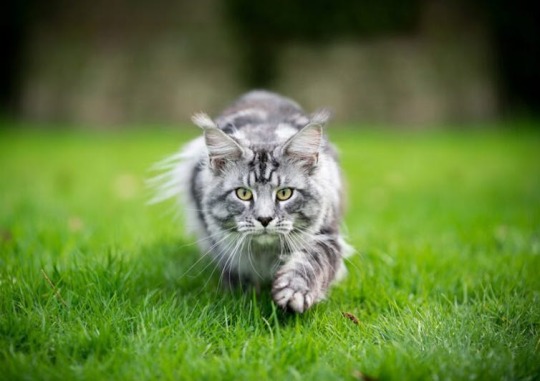
British Columbia Society for the Prevention of Cruelty to Animals
Gracias a que los humanos han extendido los gatos por todo el mundo durante los últimos miles de años, estos feroces felinos, probablemente domesticados hace 10 000 años en el Cercano Oriente, viven hoy en todos los continentes excepto en la Antártida, y han sido introducidos en cientos de islas, lo que los convierte en una de las especies de distribución más extensa.
Una especie invasora problemática con una dieta muy variada
Debido a su cosmopolitismo, los gatos han alterado muchos de los ecosistemas en los que han sido introducidos. Transmiten nuevas enfermedades a muchas especies, incluida la humana, sus impactos ecológicos superan a los causados por felinos nativos y otros mesodepredadores, amenazan la integridad genética de los félidos silvestres, se alimentan de fauna autóctona, y han llevado a muchas especies a la extinción. En conclusión, los gatos criados en libertad (es decir, gatos domésticos o no con acceso al entorno exterior) se encuentran entre las especies invasoras más problemáticas del mundo.
Un metaanálisis –basado en 530 artículos, libros e informes científicos que abarcan más de un siglo– ha servido para publicar el primer registro completo de los animales que devoran los gatos domésticos. La lista es larga: 2 084 especies diferentes han sido sus víctimas.
La mayoría corresponden a aves (981 especies), seguidas por reptiles (463), mamíferos (431), insectos (119), anfibios (57) y otros grupos taxonómicos (33). Aunque las presas más comunes son ratones, ratas, gorriones y conejos, también hay registros de gatos cazando presas más sorprendentes, como las tortugas marinas verdes de Galápagos, emúes e incluso ganado doméstico. Algunas de las criaturas que figuran en la lista, incluidos los humanos, son demasiado grandes para que los gatos las cacen, pero reflejan sus tendencias carroñeras.
Casi 350 de estas especies figuran en diferentes listas rojas de especies en peligro de extinción y varias ya están extintas. Muchas son pequeñas aves, mamíferos y reptiles endémicos de islas que carecen de depredadores naturales parecidos a los felinos, lo que significa que las incautas presas carecen de respuestas defensivas. Once especies registradas, entre las que se cuentan el cuervo hawaiano, la codorniz de Nueva Zelanda y la rata conejo australiana de patas blancas están clasificadas como extintas.
Comen más insectos de lo que imaginamos
Los datos del artículo son conservadores, porque los registros son una representación de lo que comen los gatos, que comen mucho más de lo que se puede identificar. Por ejemplo, aunque los insectos representan tan sólo algo menos del 6 % de las especies devoradas por gatos, la cifra probablemente esté subestimada debido a la dificultad de identificar restos de insectos en el estómago y los excrementos gatunos en comparación con los restos de plumas o de huesos de vertebrados.
Además de que el número de presas se incrementa proporcionalmente al de publicaciones, es probable también que, debido a que la mayoría de las fuentes utilizadas en el metaanálisis proceden de Australia y Norteamérica, el sesgo geográfico oculte la totalidad de las especies consumidas, porque los animales nativos de esos continentes dominaron el conjunto de datos. Con toda seguridad, investigaciones futuras ayudarán a comprender el impacto en las regiones extraordinariamente biodiversas de Suramérica, Asia y África, que descubrirán una multitud de criaturas en riesgo de extinción que terminan en el arenero de los gatos.

En todo caso, centrarse en los gatos es una especie de chivo expiatorio de un problema mucho mayor sobre nuestro compromiso ecológico. Si los humanos no cambiamos nuestro propio comportamiento para proteger la biodiversidad, ¿por qué deberíamos esperar que los gatos cambien el suyo?
Manuel Peinado Lorca, Catedrático emérito. Director del Real Jardín Botánico de la Universidad de Alcalá, Universidad de Alcalá
Este artículo fue publicado originalmente en The Conversation. Lea el original.
6 notes
·
View notes